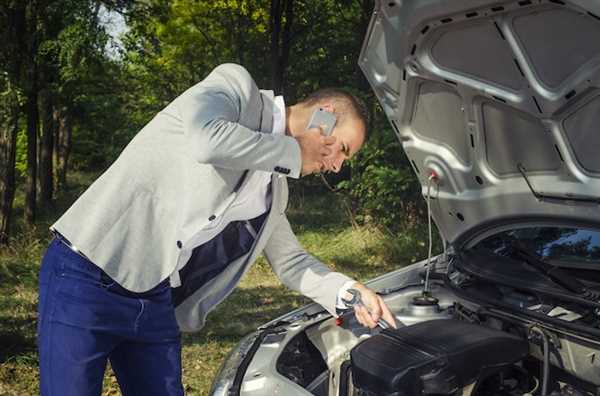
Ensure your vehicle’s coolant level is at its optimal mark. Regular checks can prevent fluid loss due to leaks or evaporation, which is critical for maintaining low temperatures in the engine bay.
Clean the radiator fins and grille to promote airflow. Debris and dirt can obstruct the cooling system’s efficiency, leading to increased operating temperatures. A simple wash can make a significant difference.
Monitor the condition of the thermostat. A malfunctioning thermostat can hinder proper coolant circulation, creating a risk of excessive heating. If you notice irregular temperature readings, consider a replacement.
Invest in high-quality coolant. Mixing incompatible fluids or using subpar options may reduce the effectiveness of your cooling system. Follow manufacturer recommendations for the right type and mix.
Take a moment to inspect the water pump. A failing pump can lead to inadequate coolant flow, resulting in the potential for dangerously high temperatures. Ensure it operates smoothly and efficiently.
Consider reducing idling time. Prolonged idle can limit airflow and cooling, generating excess heat. Whenever possible, keep the vehicle moving to enhance the cooling process.
Utilize the air conditioning judiciously. While it provides comfort, excessive use can put additional strain on the engine. Balance the use of AC with open windows to regulate cabin temperature.
Stay vigilant about driving habits. Progressive acceleration and harsh braking can increase engine load and temperature. Adopt a smooth driving style to minimize stress on the engine.
Lastly, familiarize yourself with warning signs. A rise in temperature gauge readings or unusual noises can indicate a cooling failure. Address issues immediately to avert damage and ensure reliable performance.
Check Cooling System Components for Wear and Tear

Inspect hoses for cracks or leaks, as these can lead to coolant loss. Ensure that all connections are secure to prevent any fluid escape. Look for signs of corrosion or deterioration on metal parts.
Examine the radiator for damage, such as bent fins or blockages. Clean the exterior with a gentle spray of water to remove debris that can impede airflow.
- Check the water pump for signs of leaks or unusual noise, indicating potential failure.
- Ensure the thermostat opens and closes properly; a stuck thermostat can disrupt temperature regulation.
- Inspect the coolant reservoir for cracks and ensure it has the appropriate level of coolant.
Replace any worn or damaged components promptly to maintain system integrity. Regular checks will enhance longevity and functionality.
Maintain Proper Coolant Levels and Quality

Regularly check the coolant level in your vehicle’s reservoir. The optimal level should be between the minimum and maximum marks indicated on the tank. Low coolant can lead to poor thermal regulation, increasing the risk of component failure.
Utilize the correct type of coolant for your vehicle, as different engines require specific formulas. Using the wrong mixture can compromise the cooling efficiency and lead to corrosion within the system.
Inspect the coolant for contaminants and discoloration. A clean and clear fluid indicates proper function, while cloudy or rust-colored coolant suggests the need for replacement. Flushing the system at recommended intervals can help maintain its integrity.
Check for leaks in the cooling system components–hoses, radiator, and pump. Any sign of leakage can drastically reduce the effectiveness of the coolant, leading to inadequate temperature control.
Monitor the coolant mixture ratio, particularly in warmer conditions. The right blend of antifreeze and water (typically a 50/50 mix) is essential for optimal heat dissipation and to prevent boiling.
Ensure that the radiator cap is secure and functioning correctly. An improperly sealed cap can allow coolant to escape, which reduces system pressure and effectiveness, resulting in inadequate cooling performance.
Monitor Engine Temperature and Respond Quickly to Changes
Regularly check the temperature gauge on your dashboard. If the needle moves into the red zone, take immediate action. Pull over to a safe location and turn off the ignition to allow the system to cool down.
Keep an eye on coolant levels. Ensure the reservoir is filled to the appropriate line. Low levels can lead to inadequate cooling and should be addressed right away.
Inspect hoses for leaks or wear. Damaged hoses can impede the flow of coolant and lead to temperature spikes. Replace any compromised hoses as soon as possible.
Monitor your radiator for any signs of blockage or corrosion. A clean radiator is crucial for effective heat dissipation. If you notice debris, clean it gently to enhance airflow.
Pay attention to unusual sounds from the cooling system, such as hissing or gurgling. These could indicate trapped air or a malfunctioning component. If you hear these noises, have the system checked without delay.
Periodically test your thermostat. A faulty thermostat can cause erratic temperature readings and ineffective cooling. Replace it if it does not open or close as needed.
Lastly, consider investing in a temperature monitoring device that provides real-time data. This can alert you to issues before they become severe, ensuring better management of the cooling system.
